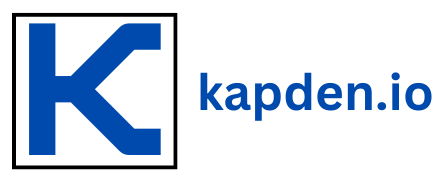Introduction
Time to Market (TTM) in software engineering refers to the time it takes from the inception of a software idea to its official release. In simple terms, it’s how quickly a team can take a product from concept to customer. In today’s fast-paced, competitive landscape, reducing TTM is crucial. The sooner a product hits the market, the quicker it
can generate revenue, gather user feedback, and capture a slice of market share.
Why Time to Market Matters
Reducing TTM isn’t just about speed—it’s about creating value. A faster TTM means:
- Faster revenue generation: Products hit the market sooner, bringing in revenue more quickly.
- User feedback: Early releases allow for faster feedback loops from users, which helps improve the product.
- Competitive advantage: By launching quicker, you can outpace competitors and establish your product in the market first.
In essence, a well-executed TTM strategy allows businesses to move ahead of the curve and stay relevant in an ever-evolving market.
Key Enablers for Faster Time to Market
Project/Product Scope and Complexity
One of the most critical factors affecting TTM is the scope of the project. Larger, more complex projects naturally take longer to complete. However, overly ambitious scopes can often result in rushed or incomplete products that miss the mark.
Best Practice: Break down the scope into smaller, more manageable chunks and prioritize iterative releases. In some high-performing teams, it’s common to have multiple releases per week—sometimes even daily—ensuring progress is constantly validated and quickly delivered. This approach not only speeds up development but also provides ongoing visibility for stakeholders and fosters confidence in the team’s work.
Frequent releases also help detect issues early and enable teams to pivot quickly, reducing the risk of costly late-stage changes.
Team Composition and Skillset
Building a strong, effective team is the next critical step in optimizing TTM. Selecting the right mix of skills, experience, and roles can make or break a project.
Challenges to address:
Many teams start with limited resources or a small core team, which can stretch the capacity of individual members.
It’s crucial that the team includes not only software engineers but also product managers, UX/UI designers, QA specialists, and even DevOps professionals.
An interdisciplinary team can move more efficiently by sharing responsibility and expertise, ensuring that development, testing, deployment, and maintenance phases are closely integrated.
Additionally, adopting practices like cross-functional collaboration and knowledge-sharing can reduce bottlenecks and improve overall team efficiency.
Engineering Practices and Tools
Adopting the right engineering practices and tools can significantly impact TTM. Here’s a closer look at some of the key methodologies and practices that help teams move faster:
- System Design & Architecture: Building a scalable, maintainable architecture from the start ensures that the product can grow and evolve without requiring massive overhauls.
- Agile SDLC: Agile practices, such as Scrum or Kanban, promote iterative development, quick sprints, and regular reviews. This approach allows teams to adapt to changes swiftly and keep the product on track for timely delivery.
- DevSecOps: Embedding security early into the development lifecycle is essential. By integrating security into the CI/CD pipeline, teams can ensure vulnerabilities are caught early, reducing the risk of costly security flaws at later stages.
- Continuous Integration/Continuous Delivery (CI/CD): Automating the integration and delivery processes allows for faster testing and deployment, ensuring that new features or bug fixes are released quickly and safely.
- Source Code Management (SCM): Using platforms like Git ensures that developers can collaborate efficiently, track changes, and avoid conflicts during the development process.
- Infrastructure Automation: Tools like Terraform or Kubernetes enable teams to automate infrastructure setup, scaling, and management, freeing up more time for development and deployment tasks.
- Logging, Monitoring, and Alerting: Proactive monitoring helps catch issues early, while automated alerting systems notify teams about potential problems that could affect product performance or uptime.
- Backup & Redundancy: Ensuring that proper backup systems are in place helps to minimize downtime and data loss in case of failures, speeding up recovery.
Penetration Testing & Security: Conducting regular security audits and penetration testing ensures the product is secure before release, preventing post-launch issues and costly remediation.
Collaboration and Communication
No matter how skilled a team is or how well tools are integrated, poor communication and lack of collaboration can hinder speed. Establishing strong communication channels and regular touchpoints between all stakeholders—whether internal teams or external partners—helps ensure that everyone is aligned on goals and timelines.
Using collaboration tools like Slack, Jira, and Confluence, along with establishing daily stand-ups and sprint reviews, ensures that challenges are addressed immediately and that progress is constantly tracked.
Conclusion
Reducing Time to Market is a multifaceted challenge that requires careful planning, the right team, and the use of effective tools and methodologies. By breaking down projects into manageable chunks, assembling a cross-functional team, adopting agile engineering practices, and ensuring seamless communication, companies can significantly reduce TTM and enhance their chances of success.
In an increasingly competitive market, the ability to move quickly without compromising quality is a valuable asset. The quicker a product reaches customers, the faster a company can iterate, improve, and innovate, ultimately leading to greater business success.


